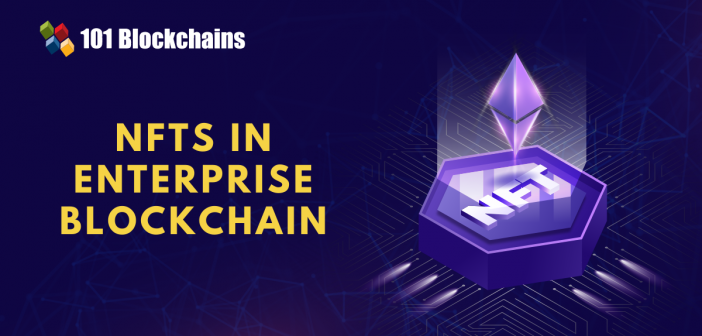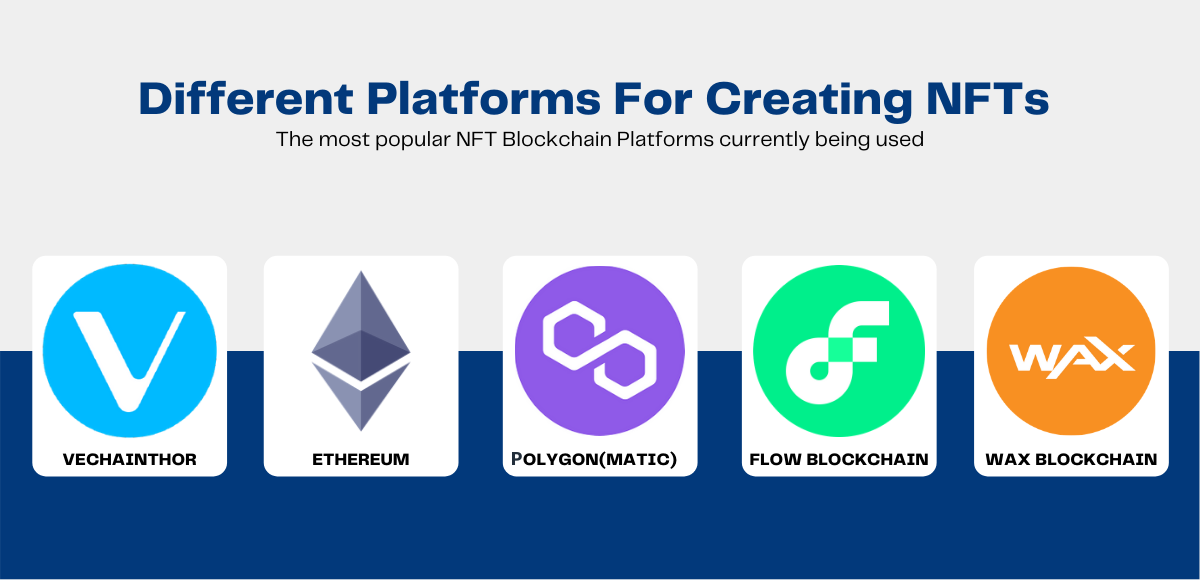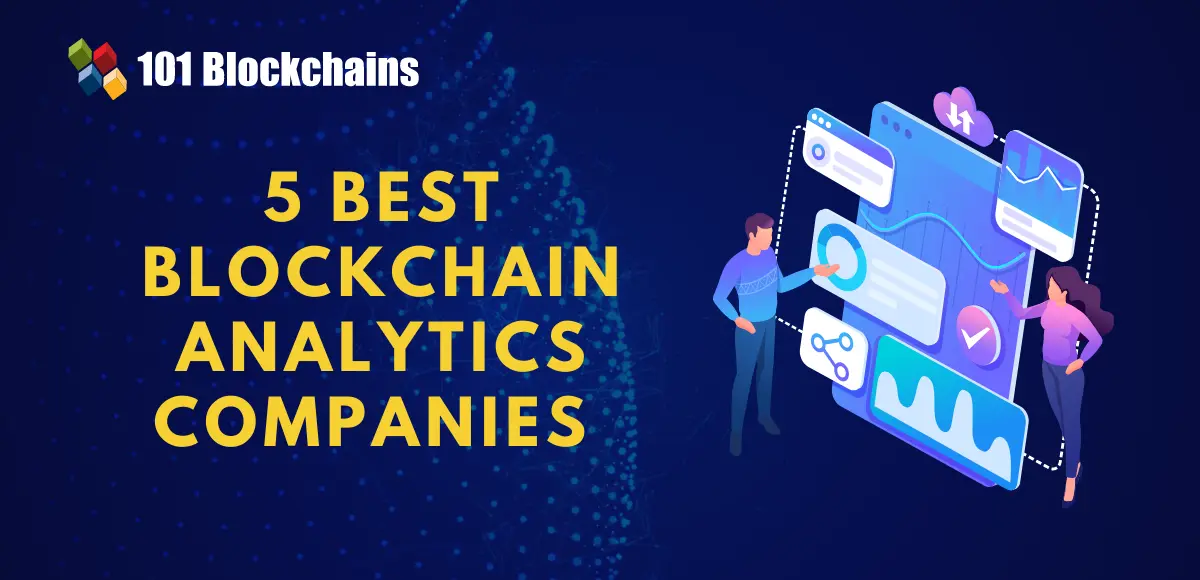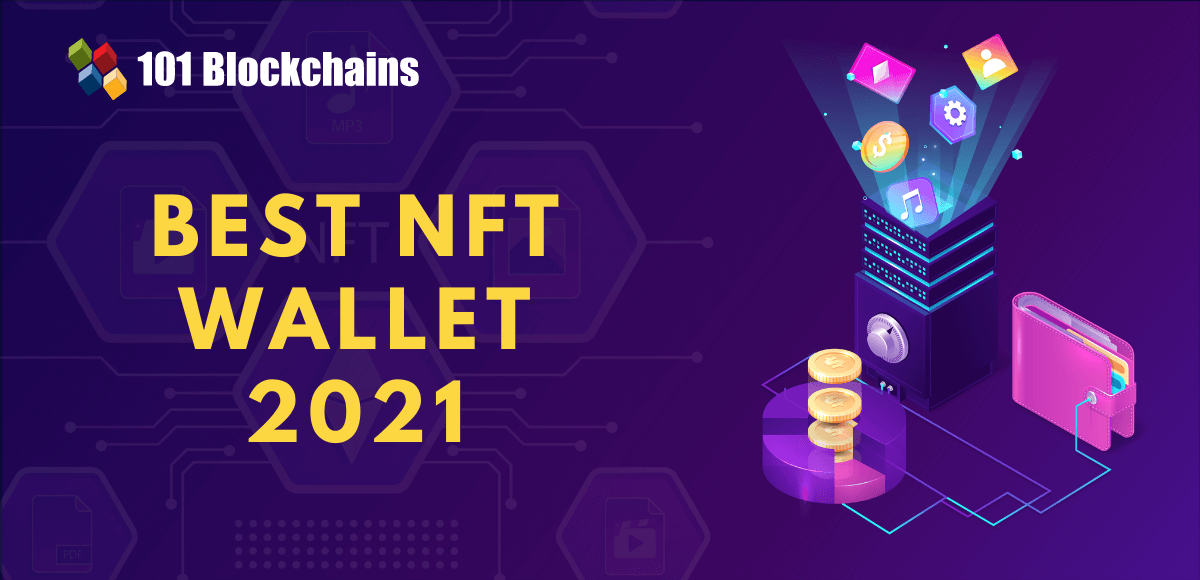Learn how blockchain truly works, master key definitions, and uncover what makes smart contracts so "smart." Dive into the fundamentals, gain valuable insights, and start your blockchain journey today!

- Guides
101 Blockchains
- on May 23, 2021
NFTs in Enterprise Blockchain
Digital art, collectibles, in-game assets, and sports, NFTs have revolutionized these sectors beyond imagination. Providing visibility, accessibility, authenticity, and most importantly, a digital proof of ownership that can be traced back to the origin of an asset for various purposes, NFTs have redefined the asset class. Even for the most illiquid assets such as real estate, the implementation of NFTs has turned the tables.
But if we look closely at the various applications of NFTs blockchain and look beyond the hype, NFTs have not yet entered the enterprise world. Therefore, the possible innovation in terms of NFT in enterprise blockchain still carries huge potential.
What needs to be considered here is that the NFTs blockchain can be used for any use case that you can think of, not just theoretically but in real life. Let us look at the following amazing use cases where NFTs have been used:
- The first tweet of Twitter CEO Jack Dorsey was sold for $2,915,835.47 as an NFT.
- In an auction, New York Times technology column was sold for more than $500,000.
- Setting new standards in memes as NFTs, “Disaster Girl” by Roth was sold for around $430,000
Therefore, the applicability of NFTs seems to have no bounds and the same goes for the NFT in enterprise Blockchain.
Before getting into the scope of NFT in enterprise Blockchain world, let us understand the concept behind NFT blockchain projects
NFTs: Why and What
The core reason why NFT blockchain projects are needed and are being adopted at such a rate is to establish the authenticity of an asset being represented digitally.
Let’s take an example to understand this.
You see a signed basketball by Michael Jordan and the first thing that comes to your mind is, “is it authentic?”
If it was any other basketball, you would not have spent another second in thinking about its value and just buy it but the fact that it is signed by Michael Jordan makes it invaluable.
Buying such a basketball will be a dream for a basketball or Michael Jordan fan and considering there are thousands out there, all fans will be tempted to buy that original, signed basketball. In a sense, the basketball will be auctioned among those fans and collectors.
The one who bids the highest will own that basketball.
In another perspective, Michael Jordan can himself sell his exclusively signed basketball to a particular fan for a fixed price.
What needs to be considered here is, how will Michael Jordan sell this basketball? And how can the buyer be able to prove that the basketball he bought actually belongs to Jordan?
This is where NFTs come into the picture.
In essence, the signed basketball of Jordan will be represented using unique tokens on the platform. These tokens will carry certain characteristics to uniquely represent basketball in the digital ecosystem. If someone buys the tokens, they are actually buying the basketball being represented by the tokens.
If the buyer wants to sell the basketball to another buyer, the authenticity of the asset will be easily established by referring to the digital record.
This is made possible using the underlying technology of Blockchain. NFTs are basically tokens that carry metadata and are stored inside Blockchain’s immutable ledger. When an asset is sold in real life or digitally, the metadata present on Blockchain includes the information of the new owner and forms a new block. This is connected to a previous block in the ledger which contains the information of the previous owner and so on. Therefore, every NFT can be traced back to its origin on NFT Blockchain for the purpose of establishing authenticity and provenance.
Want to get an in-depth understanding of non-fungible tokens (NFTs)? Enroll now in NFT Fundamentals Course.
Properties of NFTs
1. Indivisible
It is the fundamental property of a non-fungible asset that it can not be divided into sub-assets. Compared to a bitcoin which can be divided into satoshis, an NFT is one singular asset. However, the is a possibility of having fractional ownership of an NFT meaning that a user can buy X% share of the NFT but the asset as a whole stays intact.
2. Indestructible
Being built on top of a Blockchain platform, an NFT is indestructible. Even if the asset being represented by the NFT is destroyed, the metadata stored on Blockchain’s immutable ledger will exist as long as the Blockchain exists. For instance, if Mona Lisa is being represented as NFT blockchain project, the transfer of ownership will be maintained on Blockchain. If Mona Lisa gets stolen or destroyed, the record will still exist on Blockchain indefinitely and anyone at any point in time can view this record on the Blockchain.
3. Provenance
The complete record of the NFTs’ ownership and evolution is maintained on Blockchain. Every NFT can be traced back to its origin and its authenticity or originality can be verified. Therefore, even if an asset is sold a thousand times, its origin can always be checked to establish its real value.
Learn the concept, elements, future and use cases of NFTs from the Non Fungible Tokens (NFTS) Ebook
Non Fungible things in the enterprise
NFTs blockchain are the hottest trend in the industry right now and some even call 2021 the NFT year. However, the current growth of NFTs comes from typical applications such as representing digital art or collectibles or even images such as memes.
The application of NFTs in the enterprise world is believed to be the next big thing in the NFT world.
Let us look at some current implementations in the industry to understand the potential of NFTs in enterprise blockchain world.
1. Patents as NFTs
IBM, in association with IPwe, a platform for IP ecosystem worldwide announced the implementation of NFTs blockchain for patents.
Patents are a form of intellectual property of an enterprise and are illiquid. IBM plans to tokenize patents and allow enterprises to sell, buy, trade, and commercialize the patents. In a sense, IBM will monetize the illiquid patent and provide an open and accessible market for those patents to be traded.
This will be implemented by representing patents using Non-Fungible Tokens which will represent the ownership of the patents on a digital platform.
This move is believed to drive further innovation in the implementation of NFTs in the intellectual property segment.
2. NFTs in Supply Chain
An Indian software company based out of Bangalore, Koinearth has developed marketsN. It is a platform that can be used for the implementation of NFTs in the supply chain industry by enterprises. The solution will offer multiple benefits including more market visibility, trading illiquid assets, getting investors, and providing transparency to the system in terms of ownership.
Here, NFTs are not used as a revenue model but as a way to track the digital ownership of an asset such as a bill of lading, allowing the entities to benefit from complete auditability.
3. Intellectual property
Apart from patents, large corporations have numerous intellectual property that remains illiquid. Using NFTs to represent such an asset can allow enterprises to tap into their reserves and create a new revenue stream.
Further, intellectual property can also be sold as a partial NFT in which different buyers can get fractional ownership of the asset. For the buyers, it becomes a recurring revenue model as their investment grows with the use of assets. For the enterprises, it opens up the market to a large number of potential buyers leading to a better value of an asset.
4. Real estate
Infrastructure has often remained a stagnant investment for large corporations. Especially for an MNC that has a considerable number of offices around the globe, setting up separate teams to manage infrastructure, buy, and sell offices depending upon their operation consumes a lot of money and time.
NFT blockchain projects can be used to represent such an asset on a digital marketplace. Rather than depending upon intermediaries, companies can directly list their infrastructure as NFTs and use them for various purposes. For instance, a US-based company that has an office in Cambodia needs to set up local teams to manage the real estate in Cambodia. If it uses NFTs, it can either sell the office digitally, rent it out, or even use limited space of the office to provide a co-working for local businesses. The different aspects covered by NFTs blockchain here would be easy access, enhanced market visibility, tracking the ownership of the real estate, and fractional ownership.
Start learning Non-Fungible Token with World’s first NFT Skill Path with quality resources tailored by industry experts Now!
Different platforms for creating NFTs
While representing a unique asset digitally is no revelation, the possibility of representing such assets with a unique token on an immutable ledger has what made it more feasible. Therefore, NFTs are built on top of Blockchain.
For this purpose, there are different NFT Blockchain platforms of different types. To learn more about the types of Blockchain platforms, please refer to our article here.
There are many NFT Blockchain platforms available in the market and any one of them can be used to create NFTs. However, only a few of them are being used for building NFT blockchain projects.
Mentioned below are the most popular NFT Blockchain platforms currently being used:

1. VeChainThor
VeChainThor is a Blockchain platform that allows the creation and use of NFTs in enterprise blockchain. The properties of this Blockchain complement the use of NFTs in the enterprise world. The blockchain-as-a-solution called the VeChain ToolChain can be used by enterprises as a ready-to-go solution for building suitable use cases involving NFTs.
2. Ethereum
Ethereum is the first Blockchain platform that introduced the concept of smart contracts. The Ethereum 721 token standard is the most commonly used token standard for creating NFTs. The first NFT in the world was created on Etherem which was names CryptoPunks. Some of the biggest NFT marketplaces have been built on Ethereum including Opensea and Rarible. A new standard, ERC1155 has also emerged in the Ethereum ecosystem which allows the creation of a hybrid token.
Excited to learn the basic and advanced concepts of ethereum technology? Enroll Now in The Complete Ethereum Technology Course
3. Polygon(Matic)
Matic is a layer two solution for the Ethereum ecosystem. Due to the high network congestion and higher transaction fees charged in the Ethereum ecosystem, layer two solutions have become popular providing better scalability, lower transaction fees, and equal security. To develop NFTs on Matic, developers can use either the Plasma chain or the PoS chain.
Excited to develop a comprehensive understanding of Polygon? Enroll in Polygon Fundamentals Course Now!
4. Flow Blockchain
Using Cadence smart contract language, NFTs can be developed on the Flow Blockchain. Flow has been specifically built to accommodate the provenance, scalability, and transaction fee issues of the existing Blockchains. It has been developed by Dappers lab. The most popular NFT blockchain project on Flow is NBATopShots.
5. WAX blockchain
Built on the concept of EOS Blockchain, WAX is believed to be the king of the NFTs blockchain. It has been built specifically to accommodate more sustainable use cases of NFT blockchain projects by linking digital records to physical assets. Recently, WAX has launched TOPPSMLB, a baseball card NFT project.
Get familiar with the basic and advanced Non-Fungible Token (NFT) terms with the NFT Flashcards
Conclusion
While most of these platforms are public Blockchains, they can be used to create an enterprise application with restricted access. The only fact here is that the asset being represented by the NFT and the entities allowed to trade the NFTs have to be defined properly in order for it to be enterprise-enabled.
Whether it is finance, healthcare, media, event management, or intellectual property, enterprise NFT use cases can be the next big thing in the DeFi world. They have the power to redefine assets.
*Disclaimer: The article should not be taken as, and is not intended to provide any investment advice. Claims made in this article do not constitute investment advice and should not be taken as such. 101 Blockchains shall not be responsible for any loss sustained by any person who relies on this article. Do your own research!






